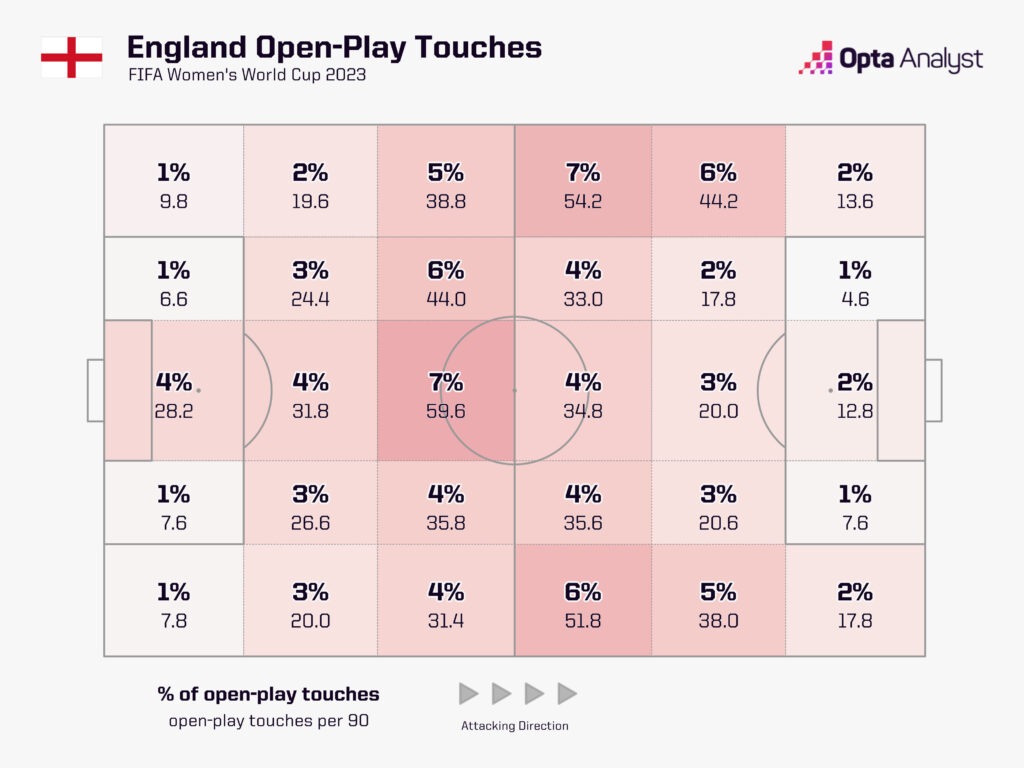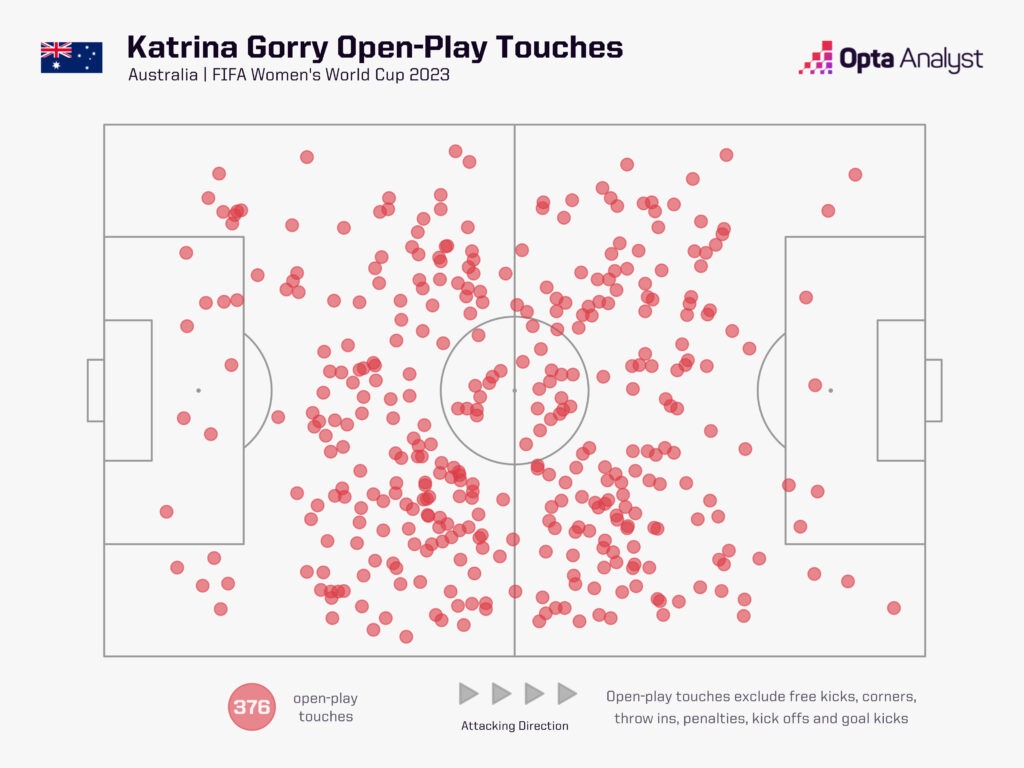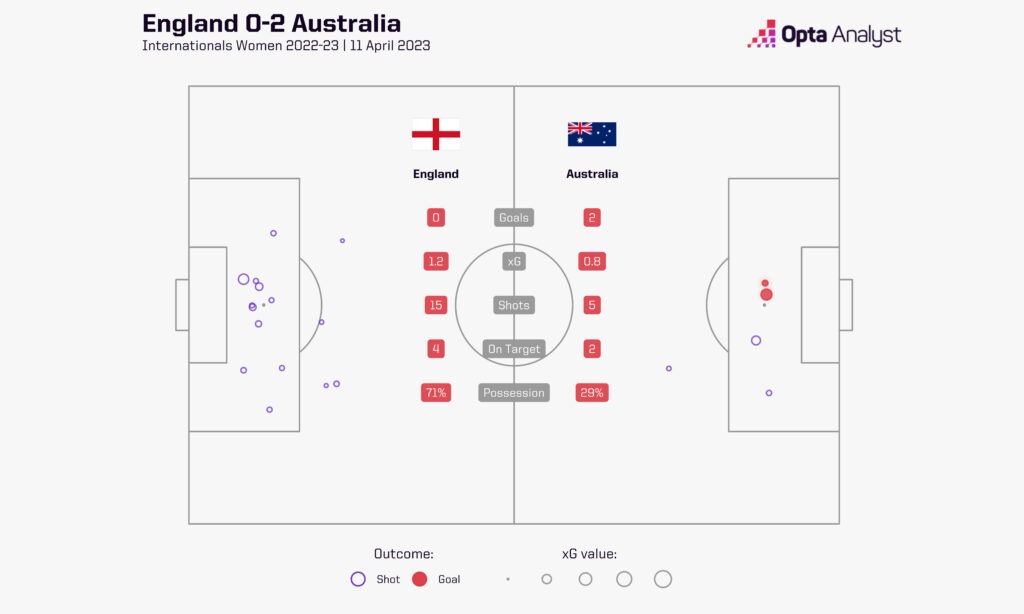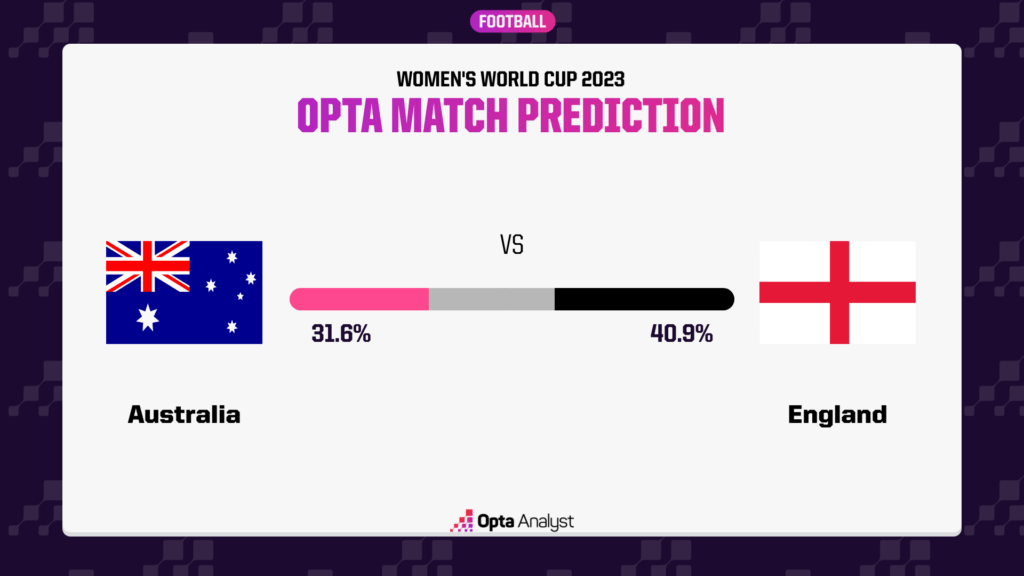We look ahead to this 2023 Women’s World Cup semi-final clash in Sydney with our Australia vs England preview and prediction.
Australia vs England Stats: Quick Hits
- The Opta supercomputer has England (40.9%) as favourites to prevail against Australia.
- The Lionesses are also overall favourites to win the tournament (32.3%).
- In the most recent game between these two sides. Australia won 2-0 in a friendly, England’s only defeat under Sarina Wiegman so far (P37 W29 D7).
Match Preview
Much has been and likely will still be made of Australia’s 2-0 victory over England in April. That was only a friendly, but the result still had huge ramifications. A Sam Kerr-inspired Australia put an end to England’s 30-game unbeaten run under Sarina Wiegman, and that loss remains their only defeat under their Dutch manager.
But that was then, and this is now.
Given the Lionesses’ mid-tournament change in formation, there is really only one tangible detail that can be taken from the previous encounter and applied to Wednesday’s semi-final in Sydney; that England will need to break down a set Australian defence.
That will suit the FIFA Women’s World Cup co-hosts just fine, as counter-attacking in transition from a solid base is the natural state of play for them under Tony Gustavsson.
Furthermore, breaking down Australia’s defence wasn’t something Wiegman’s side particularly excelled at that night in Brentford, and that’s something that has afflicted them from time to time at this World Cup, too. The absence of Lauren James – who will be serving the second of her two-game ban – only compounds this particular problem.

The Lionesses (520.6) are one of only two sides at this year’s Women’s World Cup to average over 500 completed passes per match, along with Spain (605.0). The two sides’ contrasting ability to penetrate through midfield has been palpable, though – especially once Jenni Hermoso shifted deeper for Spain.
England have averaged just 4.8 successful penalty area entries per 90 (excluding crosses) in comparison to Spain’s average of 13.6 (which is by far the highest in the competition). In fact, England have averaged over 50 attempted passes per penalty-area entry, the sixth-highest ratio of any side in the tournament and the most of any of the teams who made the knockout rounds.
Australia have looked dangerous when breaking into space ever since Hayley Raso’s early goal against Canada in the third group game – which ultimately allowed Gustavsson’s team to absorb and counter from that point on in this tournament.
Caitlin Foord’s opener against Denmark in the round of 16, following Mary Fowler’s spectacular pass to release her is probably the clearest example of this threat – with or without Kerr. Either side of Millie Bright, Alex Greenwood and Jess Carter’s capacity to defend in space could be definitive.
Of the four semi-finalists, Australia have averaged both the lowest possession figure (51.4%) and passing accuracy (72.5%), though only Spain had more shots (132) and touches in the opposition’s box (267) than the Matildas (76 and 138) prior to the semi-finals. That combination of statistics – although fairly rudimentary – shows they’ve been happy to cede the ball and rely on excellence in transition. Yet the biggest factor for Australia following opening knockout-game exits at last year’s Asian Cup and the 2019 Women’s World Cup has been Katrina Gorry’s return to the midfield.

Gorry’s role is total. She is Australia’s primary ball progressor in midfield and also their engine off it. The diminutive 31-year-old averages more passes per 90 (49.4) and more forward passes per 90 (18.6) than any other Australian midfielder. Her 3.9 progressive passes per 90 are also more than any other teammate.
She acts as both facilitator and creator in Australia’s phases of possession. And that’s not taking into account Gorry’s defensive workload, where she leads Australia at this World Cup for interceptions (1.1), ball recoveries (12.4) and tackles (3.2) per 90.
All of this does not mean Australia are impenetrable. Of the final four, Sweden had conceded the highest expected goals against (5.44) up to the semi-finals, but Australia weren’t far behind at all (5.40). They’ve also conceded more shots per game (13) than any other semi-finalist, and more than the likes of Haiti, Italy, and China, despite those sides going out in the group stage.
Teams have astutely looked to attack down Australia’s right flank – as evidenced by the disparity in Australia’s defensive actions between the two flanks.

Raso’s defensive positioning becomes relevant here. All too consistently the Australian winger has been too deep to engage the ball-carrier when the ball filters wide but has simultaneously struggled to block off the passing angles into the half-space behind her. It means Australia’s midfielders of Kyra Cooney-Cross and Gorry have to scramble over to cover, leaving gaps elsewhere for ball circulation and hampering Australia’s ability to restrict territorial gain from the side in possession.
Ultimately, the match will become a question of whose flaws are least exposed.
Australia vs England Head-to-Head
This will be the first ever meeting between Australia and England at the Women’s World Cup. As mentioned, their most recent encounter in April, Australia won 2-0 in a friendly, England’s only defeat under Sarina Wiegman so far (P37 W29 D7).
England won two contests in 2015, while they drew 1-1 in another friendly in October 2018.

Australia vs England Prediction

The Opta supercomputer has this down as an extremely close encounter but comes down on England’s side. The Lionesses have been given a 40.9% possibility of winning within 90 minutes, while Australia are given a 31.6% chance.
Wiegman’s team remain our overall tournament favourites, too. They’re at 32.3% to win the whole thing, ahead of Spain (26.7%).
England have faced the hosts of a Women’s World Cup only once before, beating Canada 2-1 in the quarter-finals in 2015, with Lucy Bronze scoring the winner. They’ll be hoping of a repeat this year.
Australia vs England Squads
Australia: Lydia Williams, Mackenzie Arnold, Teagan Micah, Courtney Nevin, Aivi Luik, Clare Polkinghorne, Cortnee Vine, Clare Wheeler, Steph Catley, Alex Chidiac, Caitlin Foord, Emily van Egmond, Mary Fowler, Tameka Yallop, Alanna Kennedy, Clare Hunt, Hayley Raso, Kyah Simon, Katrina Gorry, Sam Kerr, Ellie Carpenter, Charlotte Grant, Kyra Cooney-Cross
England: Mary Earps, Lucy Bronze, Niamh Charles, Keira Walsh, Alex Greenwood, Millie Bright, Lauren James, Georgia Stanway, Rachel Daly, Ella Toone, Lauren Hemp, Jordan Nobbs, Hannah Hampton, Lotte Wubben-Moy, Esme Morgan, Jess Carter, Laura Coombs, Chloe Kelly, Bethany England, Katie Zelem, Ellie Roebuck, Katie Robinson, Alessia Russo.
Enjoy this? Subscribe to our mailing list to receive exclusive weekly content. And follow us on Twitter too.
